I. Concepts of Color
The ancient Greeks had a unique understanding of color that differed significantly from our modern perception. They didn’t focus on categorizing specific hues like we do today. Instead, they described colors based on qualities like brightness, darkness, saturation, and light. The meaning of color terms could be quite fluid. A single term could encompass a range of hues depending on the context. “Kyanos,” for instance, could refer to various shades from dark blue to blue-green.

Pythagoras saw colors as analogous to musical notes, each with a specific vibrational frequency. Harmony arose from proper proportions between colors, like in music. Numbers were associated with colors, reflecting cosmic connections. Colors held symbolic meanings beyond their appearance, like white representing purity and black symbolizing the unknown. This idea of color as vibrational energy influenced later thinkers. Though specific color associations may seem arbitrary today, they reflected a worldview seeking harmony and order in the universe, expressed through numbers and proportions.
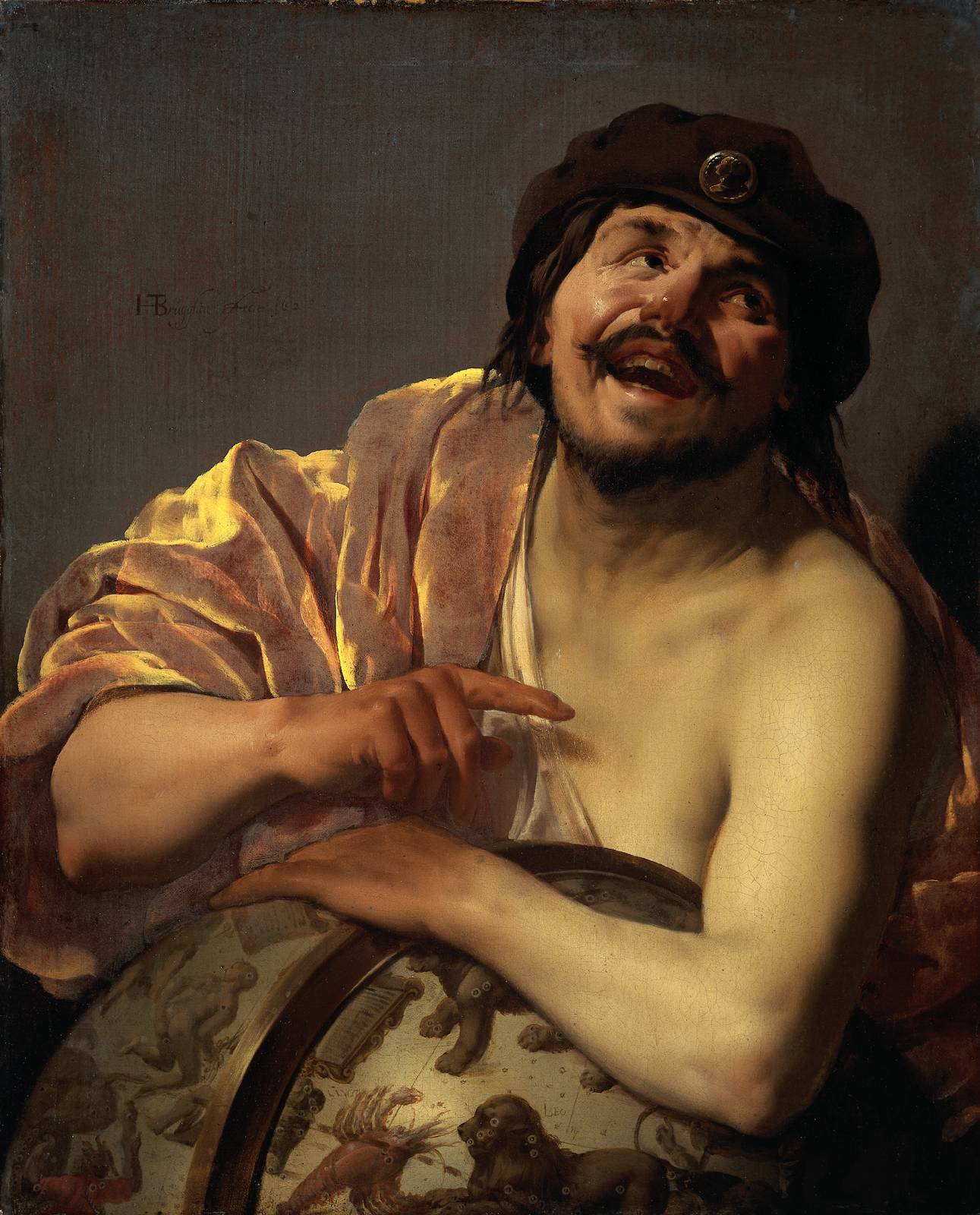
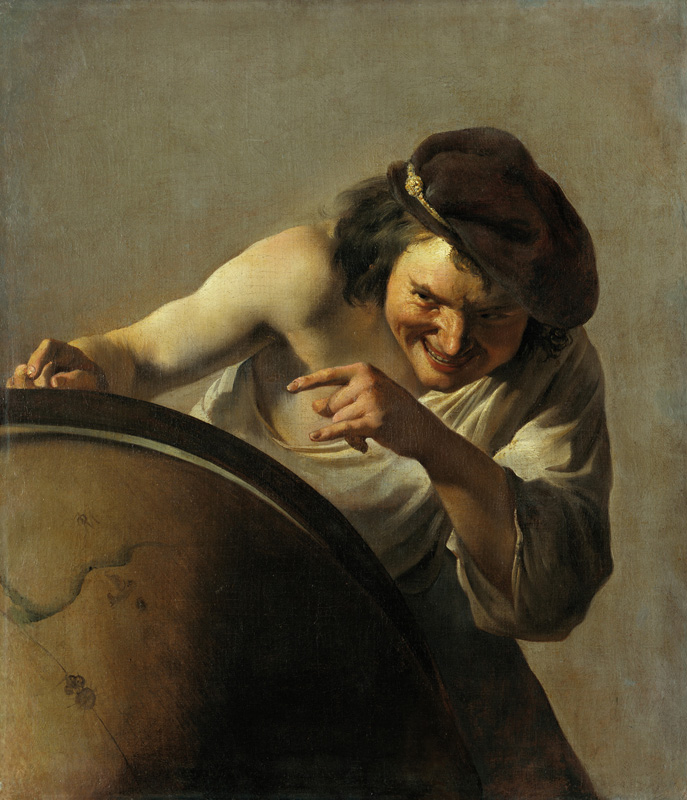
Democritus, known for his atomic theory, also proposed a color theory rooted in atomism. He believed colors emerge from the specific configuration of atoms constituting objects, not inherent properties. The shape, size, arrangement, and motion of atoms determined the perceived color. Smooth, round atoms produced white, while rough ones produced black, with other colors resulting from varying combinations. He recognized that color perception could also be influenced by the observer and environment. Although speculative, his theory represented an early attempt to explain color based on physical properties, foreshadowing later developments in optics and color science.
Plato‘s concept of color was rooted in his broader philosophical views. He believed colors were real properties of objects, not subjective experiences. In his dialogue Timaeus, he described colors as “flames” emanating from objects, interacting with the “visual fire” in the eye. Different colors arose from variations in the size and shape of these emanations. He focused on four basic colors: white, black, red, and “lampron” (yellow/gold). These colors held symbolic meaning and were linked to moral and aesthetic qualities.
Plato acknowledged that color perception could vary depending on the individual and environment, but he ultimately believed in the objective reality of colors, perhaps seen as imperfect reflections of ideal Forms.
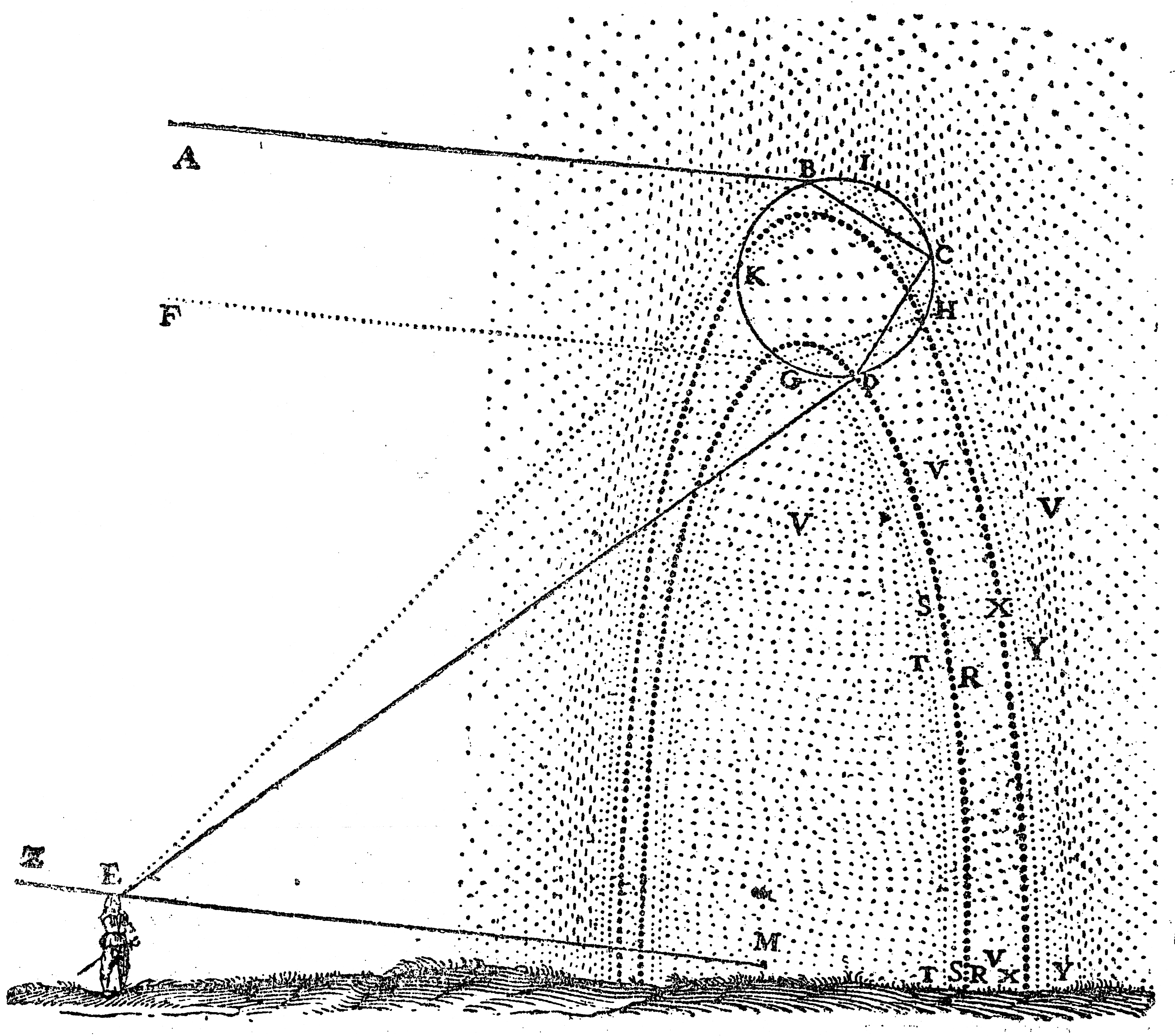
Aristotle‘s color theory was grounded in his empirical observations and philosophical framework. It differed from Plato’s focus on emanations and ideal forms, emphasizing instead the role of light and the medium through which it passes.
- Light and Transparency: Aristotle believed that colors were modifications of light as it interacted with transparent media, like air or water. The degree of transparency and the specific nature of the medium influenced the resulting color.
- Primary Colors: He identified seven primary colors: black, white, red, yellow, green, blue, and violet. These were considered fundamental, and other colors arose from their mixtures and variations.
- Color Mixing: Aristotle recognized that colors could be mixed to produce new hues. He emphasized the role of white and black in creating lighter and darker shades, respectively.
- Natural Phenomena: He sought to explain various natural phenomena, like rainbows and the colors of the sky, through his color theory.
- Subjective Perception: Aristotle acknowledged that color perception could be influenced by factors like lighting conditions, individual differences, and the presence of other colors. However, he maintained that colors existed objectively in the natural world, independent of human perception.
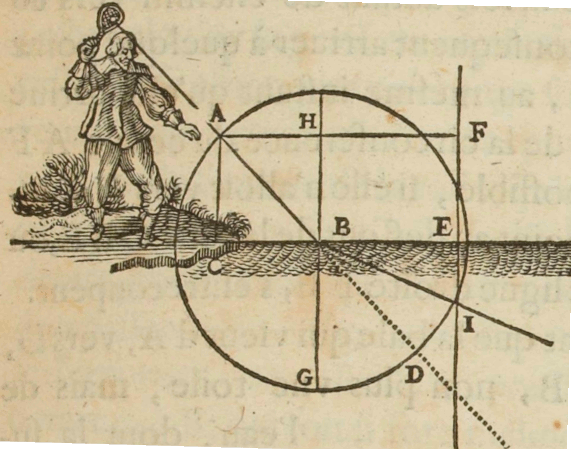

- Aristotle’s color theory is primarily presented in his work “On Sense and the Sensible,” where he discusses various aspects of sensory perception.
- His approach was empirical, drawing from observations of natural phenomena and everyday experiences.
- While influenced by earlier thinkers like Plato and Empedocles, Aristotle’s theory marked a departure from purely metaphysical explanations, seeking more grounded, physical explanations.
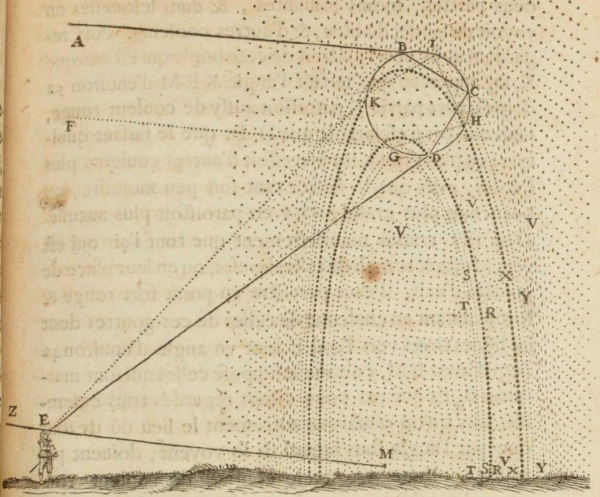
Alhazen, also known as Ibn al-Haytham (~965-1040), made significant contributions to the understanding of color, challenging earlier theories and paving the way for a more scientific approach.
Light as the Source of Color: Alhazen recognized that light is the fundamental source of color perception. Colors are not inherent properties of objects but rather result from the interaction of light with those objects.
Transparency and Modification of Light: He observed that colors arise from the modification of light as it passes through or reflects from transparent or translucent media. The degree of transparency and the nature of the medium influence the resulting color.
Color Constancy: Alhazen explained the phenomenon of color constancy, noting that we perceive an object’s color as relatively stable even under varying lighting conditions. He attributed this to the visual system’s ability to separate the effects of illumination from the object’s intrinsic color.
Primary and Secondary Light: He distinguished between primary light (emitted directly from luminous sources) and secondary light (reflected from illuminated objects). He recognized that secondary light carries the color information of the object it reflects from.


Alhazen’s work, particularly his “Book of Optics,” revolutionized the understanding of light and color. His emphasis on experimentation and observation laid the groundwork for the scientific method in optics. His ideas influenced later scientists and artists, including Roger Bacon, Leonardo da Vinci, and Johannes Kepler, contributing to the development of modern color theory and optics.
Giovanni Battista Della Porta (1535-1615) made significant contributions to the understanding of color during the Renaissance period. He proposed a color theory that challenged the prevailing view of colors as intrinsic qualities of objects, instead suggesting that they arise from the interaction of light and shadow. Furthermore, he developed an early model of the color wheel, identifying four primary colors – white, black, yellow, and blue – and postulating that other colors were derived from their combination.
Della Porta’s research also delved into the concept of color harmony and its practical applications. Through extensive experimentation with pigments and colored lenses, he investigated how different colors could be blended and utilized to evoke specific emotional responses. While his theory may not fully align with contemporary scientific understanding, it undeniably exerted a significant influence on subsequent generations of artists and scientists, contributing to the evolution of color theory and its practical applications in various fields.
Della Porta’s work represents a pivotal moment in the history of color studies, demonstrating a shift towards a more empirical and systematic approach to understanding the complexities of color perception and its implications. His legacy endures as a testament to his pioneering spirit and dedication to unraveling the mysteries of the visual world.



Aron Sigfrid Forsius (1550-1637) was a Finnish astronomer and priest who is credited with creating the first known color wheel. He included this color wheel in a treatise on physics that he wrote in 1611. His color system was designed within a sphere, and included the primary colors of red, yellow, green, and blue.
While Forsius’ work was groundbreaking, it was largely unknown until the mid-20th century. His treatise was essentially lost in the Royal Library in Stockholm and was only rediscovered in 1969. As a result, his color wheel had little influence on the development of color theory or artistic practices during his lifetime or in the centuries that followed.
Despite its obscurity, Forsius’ color wheel represents an important early attempt to systematically organize and understand color. His work paved the way for later color theorists like Isaac Newton, whose color wheel is far more widely recognized today.

Franciscus Aguilonius (1567-1617), also known as François d’Aguilon, was a Belgian Jesuit mathematician, physicist, and architect. He is best known for his work in the field of optics, particularly his book “Opticorum libri sex” (Six Books of Optics), published in 1613. In this book, Aguilonius explored various aspects of optics, including the nature of light, vision, and the geometry of light rays. He also made significant contributions to the understanding of color theory.
One of Aguilonius’ notable achievements was his proposal of a tri-color system based on red, yellow, and blue as the primary colors. This system, though not entirely novel, was presented in a clear and systematic manner, contributing to the ongoing development of color theory during the 17th century.



Robert Fludd was a prominent 17th-century English physician, philosopher, and occultist known for his mystical and hermetic views on the universe.

Sir Isaac Newton (1642-.1727)


I took a bodkin gh and put it between my eye & the bone as near to the backside of my eye as I could: and pressing my eye with the end of it (soe as to make the curvature a, bcdef in my eye) there appeared several white dark & colored circles r, s, t, &c. Which circles were plainest when I continued to rub my eye with the point of the bodkin, but if I held my eye & the bodkin still, though I continued to press my eye with it yet the circles would grow faint & often disappear until I renewed them by moving my eye or the bodkin.



Isaac Newton’s discoveries in the field of color were groundbreaking and had a profound impact on our understanding of light and optics. His key findings can be summarized as follows:
- White light is a mixture of colors: Newton famously demonstrated that white light is not a pure entity but a composite of various colors. He passed a beam of sunlight through a prism, observing that it dispersed into a spectrum of colors (red, orange, yellow, green, blue, indigo, and violet), which he termed the “spectrum.”
- Colors are properties of light, not objects: Contrary to prevailing beliefs, Newton showed that colors are inherent properties of light itself, not modifications caused by objects. He proved this by recombining the dispersed colors using a second prism, resulting in white light again.
- Color is related to the refrangibility of light: Newton discovered that different colors of light refract (bend) at slightly different angles when passing through a prism. This phenomenon, known as dispersion, explains why white light separates into a spectrum. Violet light bends the most, while red light bends the least.
These discoveries led Newton to develop his theory of color, which states:
- Colors are produced by the interaction of light with matter: Objects appear colored because they absorb certain wavelengths of light and reflect others. The reflected wavelengths reach our eyes and are interpreted as specific colors.
- The color of an object depends on the light illuminating it: The perceived color of an object can change depending on the composition of the light source. For example, an object that appears red under white light may appear different under a colored light source.
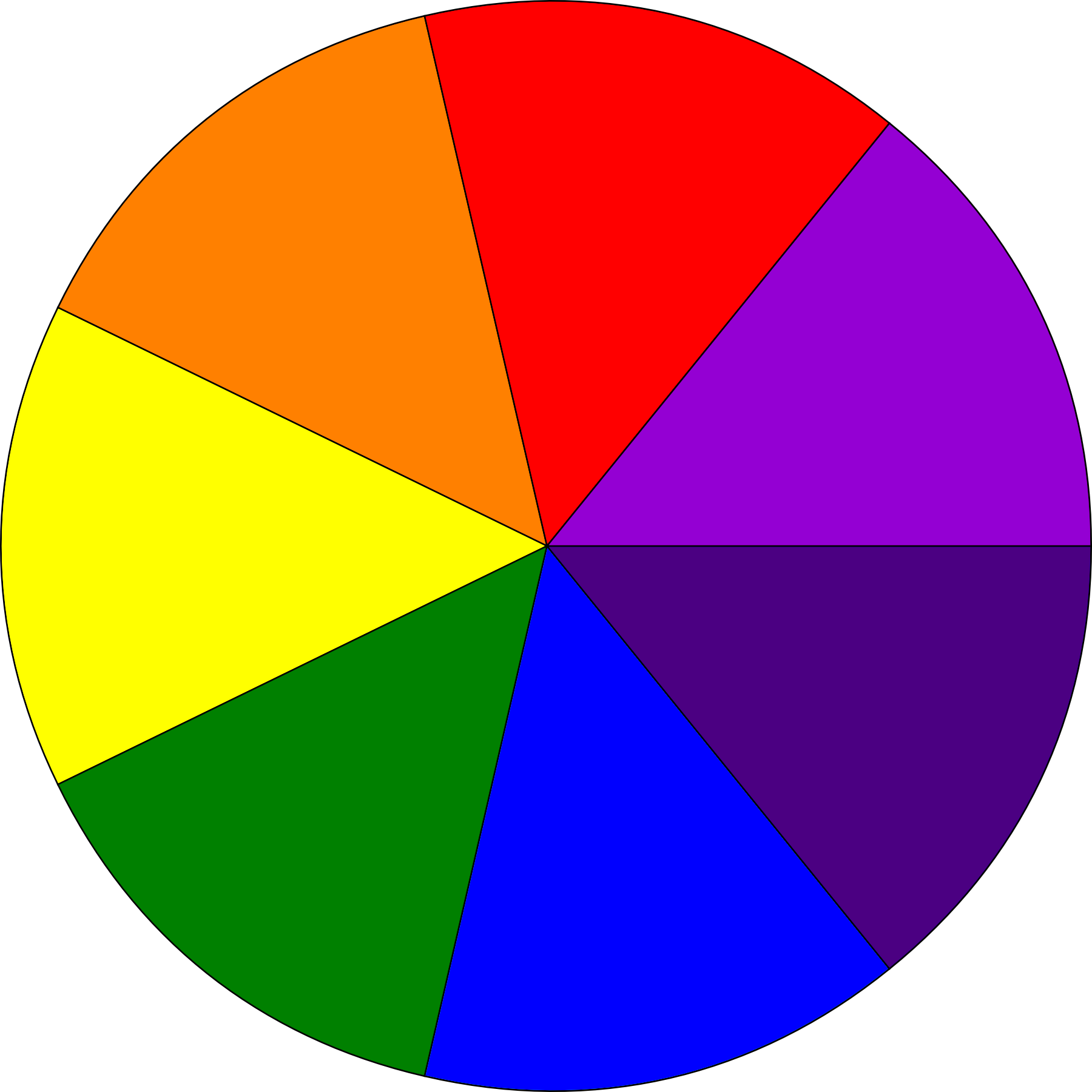
The Newton disc, also known as the disappearing colour disc, is a well-known physics experiment with a rotating disc with segments in different colours (usually Newton’s primary colours: red, orange, yellow, green, blue, indigo, and violet, commonly known by the abbreviation ROYGBIV) appearing as white (or off-white or grey) when it’s spun rapidly about its axis.
This type of mix of light stimuli is called temporal optical mixing, a version of additive-averaging mixing. Although this type of disc is named after Newton, it is unlikely that he ever used a spinning disc to demonstrate the principles of light

Newton’s understanding of purple came from his observation that magenta can be created by combining red and violet, the first and last colors in the spectrum. Because magenta is not a color found in the rainbow, it is considered extra-spectral. This led him to arrange the color spectrum in a circular fashion, which allowed him to predict color mixing by finding the midpoint between two colors on the circle. In order to have the same amount of colors as there are days in a week or notes in an octave, Newton chose to include seven colors, which he spaced asymmetrically – this lead to asymmetric distances between each (see above).

Johann Ignaz Schiffermüller (1727-1806)
A color-circle based on four colors, red, blue, green and yellow, divided into 3 x 4 = 12 segments. His circle is one of the first the first to place complementary colors opposite each other with 12 divisions: 4 reds, 4 blues, 3 greens, and 2 yellows.

His color-circle is provided with fanciful names:
blue, sea-green, green, olive-green, yellow, orange-yellow, fire-red, red, crimson, violet-red, violet-blue and fire-blue.
Johann Heinrich Lambert (1728-1777) presented the first three-dimensional color system in the form of a pyramid.
He layered darker tones at the center, flowing out to three primary hues labeled as ‘cinnibar, King’s yellow, and azurite’. The layers increased in brightness, eventually fading to white at the top. Lambert designed his system to aid textile dyers and printers in selecting colors and as a representation for textile merchants of the colors that they might stock. His system is subtractive, because the primary colors are red, yellow, and blue and cover pigment mixing.

Tobias Mayer (1723-62)
In an effort to create a standardized color notation, similar to musical notation, artists began representing the color spectrum as three-dimensional solids. One such example is Tobias Mayer’s color triangle, which appeared in his book The Affinity of Color Commentary, published in 1775.
Mayer aimed to accurately define the number of colors the human eye can distinguish. To achieve this, he added a dimension representing brightness variations to each color.
- Mayer’s method involved painting the corners of a triangle with the three traditional primary colors used in painting: red, yellow, and blue.
- He then mixed opposing colors together, connecting the corners.
- Unlike the traditional color circle, Mayer created numerous variations of this triangle by stacking triangles of different brightnesses. This allowed for a color to be defined by its position within a 3D space, a technique that is still used.
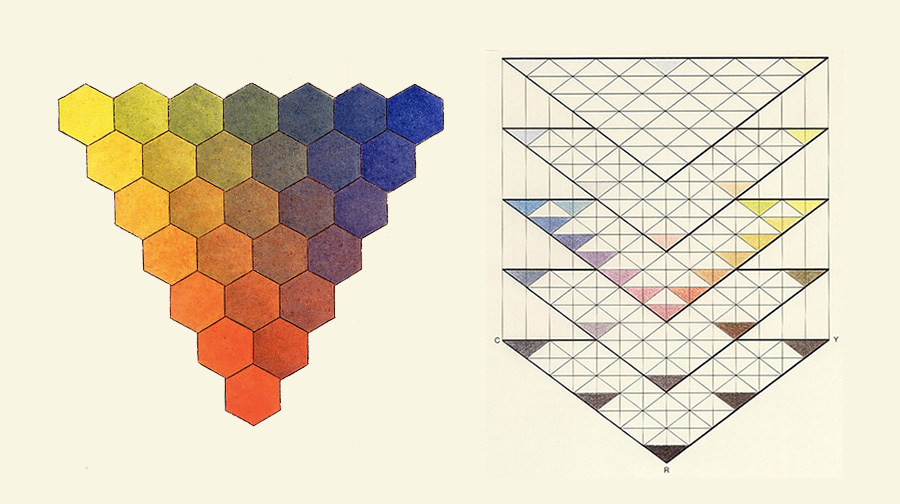
Moses Harris (1731-85) the first artists color wheel designed specially as an aid to color mixing:
The Natural System of Colors. 1776


Moses Harris, an English entomologist, engraver, and naturalist (1731-1785), sought to understand the relationships between colors and reveal the multitude of colors that could be created from three basic ones. To this end, Harris created The Natural System of Colors, the first color wheel specifically designed to aid artists in color mixing, after examining Newton’s work.
Thomas Young (1773-1829)
Tri-chromatic theory.
Young proposed that the eye detects three primary colors, Red, Green and Blue.
Refined about 50 years later by Hermann van Helmholtz.

Wave Theory of Light: Young’s most impactful contribution was establishing the wave theory of light. He conducted experiments with light interference, observing how light beams passing through two closely-spaced slits created patterns of light and dark bands on a screen. This phenomenon could only be explained if light behaved as waves, reinforcing or canceling each other out. This challenged Newton’s corpuscular theory of light and paved the way for modern optics.


Trichromatic Theory of Color Vision: Young proposed that human color vision is based on three types of color receptors in the eye, each sensitive to a different range of wavelengths (red, green, and blue). This theory, later refined by Hermann von Helmholtz, is known as the Young-Helmholtz trichromatic theory and remains the foundation of our understanding of color vision.
Color and Wavelength: By applying his wave theory to Newton’s observations of colors in thin films, Young was able to link specific colors to their corresponding wavelengths of light. This provided a quantitative basis for understanding the relationship between color and the physical properties of light.
Color Blindness: Young also made observations about color blindness, suggesting that it might be caused by a deficiency in one or more of the three color receptors. This insight laid the groundwork for further research into color vision disorders.


Philipp Otto Runge (1777-1810), a German Romantic painter, made significant contributions to color theory, particularly with his development of the “Farbenkugel” or Color Sphere. His approach to color was both artistic and scientific, blending empirical observation with philosophical and spiritual interpretations.
- The Color Sphere: Runge’s most notable contribution is his three-dimensional color sphere. He organized colors on a sphere, with the pure hues (red, yellow, and blue) forming an equilateral triangle around the equator. The poles represented white and black, while the intermediate colors resulted from mixing the primaries and varying the amount of light or dark.
- Primacy of the Three Primary Colors: Runge, like many before him, considered red, yellow, and blue to be the fundamental building blocks of all colors. He believed that all other colors could be created by mixing these three primaries in various proportions and with varying degrees of lightness or darkness.
- Symbolic Associations: Runge also assigned symbolic meanings to colors, connecting them to philosophical and religious concepts. He associated blue with the night, the divine, and God the Father; red with the morning and evening, and Jesus Christ; and yellow with the Holy Spirit and the midday sun.
- Harmonious Color Relationships: Runge sought to discover harmonious relationships between colors. He believed that understanding these relationships was crucial for creating aesthetically pleasing and spiritually resonant artworks.
- Practical Application: While Runge’s color sphere was a theoretical model, he also aimed to apply his color theory to his artistic practice. He experimented with different color combinations and techniques, striving to express his spiritual and philosophical ideas through color.

Although Runge died young at the age of 33, his color theory had a lasting impact on subsequent color theorists and artists. His color sphere anticipated later developments in three-dimensional color models, and his emphasis on the symbolic and emotional aspects of color resonated with the Romantic movement.
Johann Wolfgang von Goethe (1749-1832)
Goethe: Színtan, Corvina, Budapest, 1983, ISBN: 9631312909, Fordította: Rajnai László
https://szmz.hu/teaching/wp-content/uploads/2024/09/Goethe-Szintan.pdf
http://digipedia.mandaonline.hu/files/document_file/filename/12646/Johann%20Wolfgang,%20Goethe%20-%20Sz%C3%ADntan.pdf
https://www.scribd.com/document/320387039/Goethe-Szintan-pdf
Goethe’s Theory of Colours, London, 1840
https://szmz.hu/teaching/wp-content/uploads/2024/09/goethestheoryco01goetgoog.pdf
https://archive.org/details/goethescolortheo00goet
Goethe’s approach to color diverged from Newton’s by focusing on human perception rather than the physical properties of light. Unlike Newton, who saw darkness as merely the absence of light, Goethe considered it an active participant in the creation of color. He argued that color arises from the interplay between light and darkness, rather than being inherent in light itself.

According to Goethe, color arises from the interplay between light and darkness, with both elements playing essential roles. He observed that when light is seen through a dimming medium, it appears yellow, and as the medium becomes darker or denser, the color progresses to orange and then red. This suggests that darkness actively modifies light to produce different colors.

Goethe also rejected Newton’s idea that a prism merely reveals the colors already present in white light. Instead, Goethe believed that the prism actively participates in the creation of color by refracting light through the contrasting boundary between light and darkness. When light passes through a prism, the light and dark edges mingle, resulting in the emergence of color.



Goethe conducted experiments to support his theory, such as observing colors through different media and using prisms to refract light. He also studied the process of bluing steel, where a film of oxidation forms on the polished surface, causing light to be reflected through a dimming medium, resulting in a sequence of colors from straw to red to blue.
Goethe’s emphasis on the active role of darkness in color creation aligns with his broader philosophical view that color is a subjective experience arising from the interaction between the observer and the observed.
Sir John Frederick William Herschel (1738-1822)
In 1800, Herschel discovered infrared radiation while investigating how much heat was passed through different colored filters he used to observe sunlight. He directed sunlight through a glass prism to create a spectrum and measured the temperature of each color.

W. Herschel, “Experiments on the Refrangibility of the Invisible Rays of the Sun,” Philosophical Transactions of the Royal Society of London, Vol. 90 (1800), pp. 284-292.


The experiment that Herschel performed involved the use of a prism to create a spectrum. Sunlight passed through the prism and was dispersed into a rainbow of colors. Herschel measured the amount of heat in each color and noticed that the temperature increased from the blue to the red part of the visible spectrum. He then placed a thermometer just beyond the red part of the spectrum in a region where there was no visible light and found that the temperature was even higher. Herschel realized that there must be another type of light beyond the red, which we cannot see. This type of light became known as infrared.
Hermann Ludwig Ferdinand von Helmholtz(1821-94)
Around 1860, Helmholtz embraced Thomas Young’s concept that the eye perceives color using three receptors sensitive to short (violet), medium (green), and long (red) wavelengths of light.


Helmholtz built upon Young’s theory by suggesting the existence of three distinct photopigments in the retina—blue, green, and red—each designed to absorb specific light wavelengths. This proposition accounted for color mixture principles and the mechanisms underlying color perception. This tri-chromatic theory, sometimes referred to as “Component Theory”, proposes that the eye detects three primary colors: red, green, and blue.

In 1857, James Clerk Maxwell used the recently developed linear algebra to offer a mathematical proof of the Young–Helmholtz theory.

Helmholtz’s theories gained popularity in France during the nineteenth century, influencing artists such as Cézanne. While Helmholtz is linked to the physics of color in relation to Seurat, the psychophysics of Charles Henry may be more relevant.
Initially, Helmholtz’s trichromatic theory appeared to conflict with Hering’s opponent color theory; however, these were later understood as complementary rather than contradictory. The trichromatic and opponent theories describe the neural system’s functioning at different levels, illustrating the complexity of color perception.
The first color (~trichromatic) photograph was presented by James Clerk Maxwell in 1861:
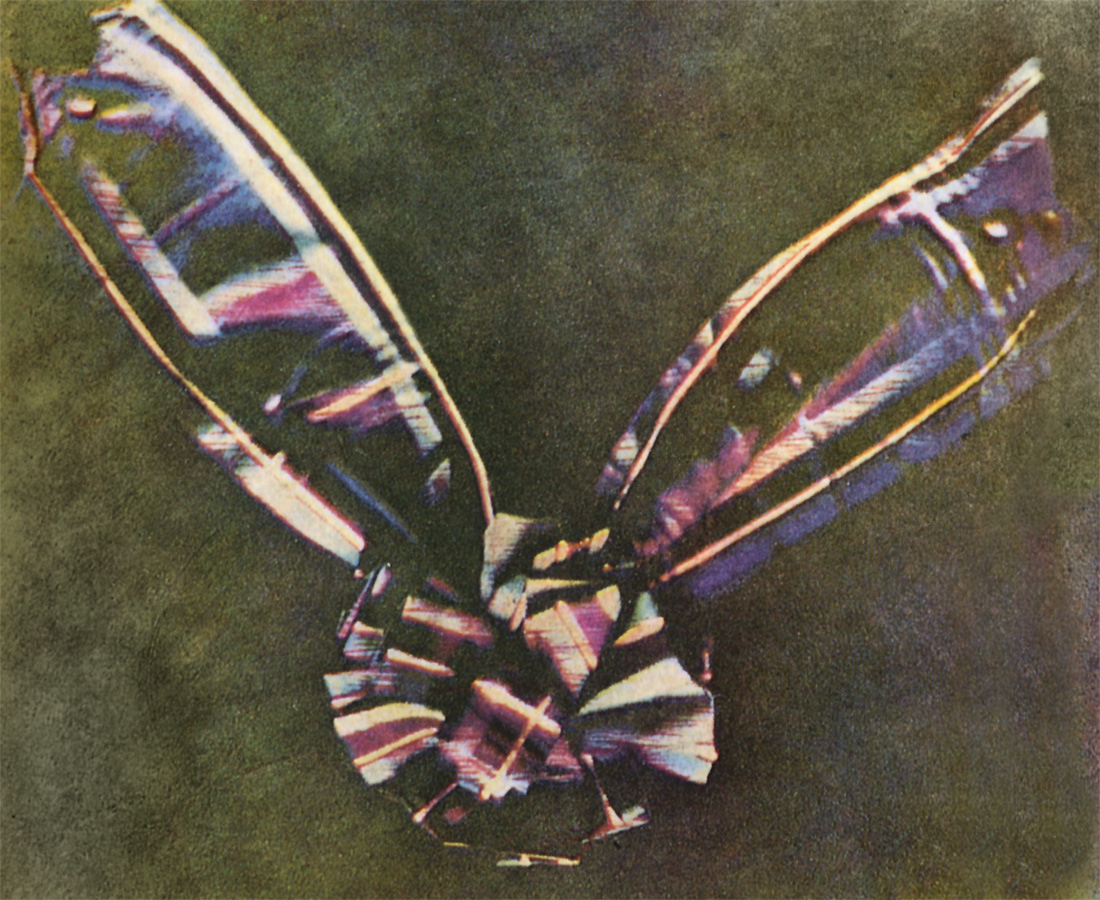




Prokudin-Gorsky Collection in the Library of Congress: https://www.loc.gov/exhibits/empire/gorskii.html
prokudin-gorsky.org at the Wayback Machine: https://web.archive.org/web/20140514040459/http://prokudin-gorsky.org/geocat.php?lang=en
Professor Dr. Miethe’s Three-Color camera (manufactured between1903 and cc. 1930): http://www.vintagephoto.tv/mb.shtml
Autochrome Lumière
The Lumière brothers (Auguste and Lois) presented their research into colour photography to the Académie des Sciences in 1904. The commercial manufacture of autochrome plates began in 1907, and the first public demonstration of the autochrome process took place on 10 June 1907, at the offices of the French newspaper L‘Illustration.
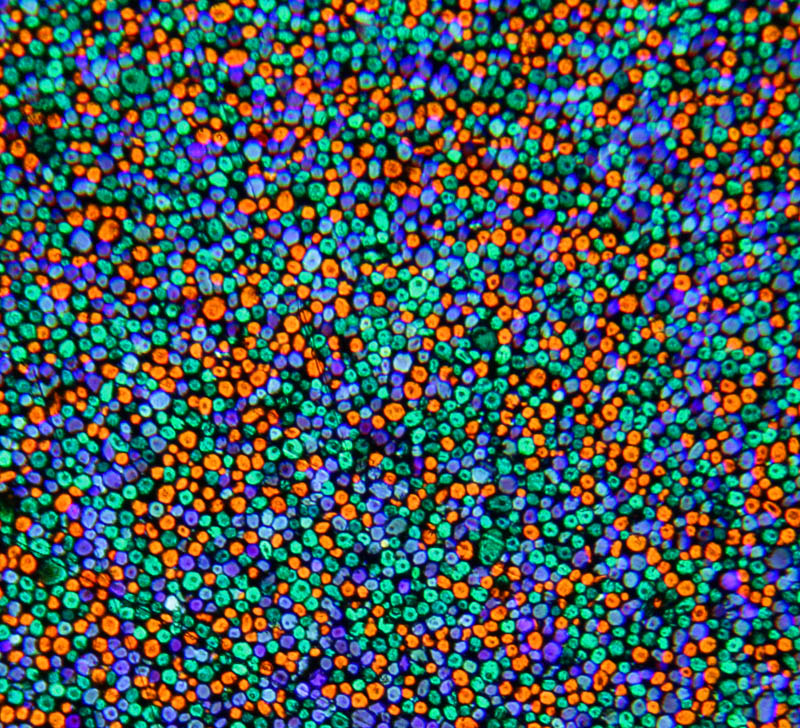
right: Autochrome in an original diascope viewing case

Autochrome plates are covered in microscopic red, green and blue coloured potato starch grains (about four million per square inch). When the photograph is taken, light passes through these colour filters to the photographic emulsion.

The plate is processed to produce a positive transparency. Light, passing through the coloured starch grains, combines to recreate a full colour image of the original subject.

SSPL/Getty Images

SSPL/Getty Images

Wikimedia Commons

Musée Albert-Kahn

George Eastman Museum/Flickr

Alfred Stieglitz/The Metropolitan Museum of Art

The Metropolitan Museum of Art

Musée Albert-Kahn

The Royal Photographic Society Collection/National Science and Media Museum/SSPL/Getty Images




Source: Getty
Girls And Gardens : The English Lady’s Autochromes (c.1908)
Karl Ewald Konstantin Hering (5 August 1834 – 26 January 1918)
Ewald Hering’s opponent process theory, published in 1892, suggests that color perception is based on a system of antagonistic responses to color pairs: red-green, blue-yellow, and black-white

Hering proposed that color perception isn’t just about the excitation of cones in the retina, as described by the Young-Helmholtz trichromatic theory, but also involves a secondary level of neural architecture.
Hering shifted the focus from the photoreceptor cells to the function of what are now known as the bipolar and ganglion cells. As these cells receive information from the photoreceptor cells, a highly intricate and antagonistic form of post-retinal processing occurs. Hering argued that color perception was a reactive physiological response that followed three “opponent” axes or channels: red-green, blue-yellow, and black-white (chromatic/achromatic). To perceive red, an increase in a chemical reaction must occur, one that is antagonistic and at the expense of perceiving green. In short, Hering suggested that color perception turns upon an activation and deactivation of internal chemical processes and concerns “the ‘learning’ aspects of the varied perceptual problems, in terms of physiological mechanisms”. (That is why we cannot see (or even imagine) yellowish-blue or greeny-red, while we can easily deal with yellowish-green, yellowish-red(orange) or blueish-red(purple).)

Hering distinguished four basic colors: blue, red, green, and yellow, which are not independent values, but rather opposing pairs. Red is the opposite of green, and yellow is not a mixture of green and red, but rather the opposite of blue. We don’t perceive the absolute values of receptors, but the relative proportions of the opponent pairs. That is, we don’t perceive the absolute redness or greenness of an object; instead, we perceive where a given color is located on the red-green scale and the yellow-blue scale.
This theory explains phenomena such as color constancy and afterimages, because the paired physiological processes are assumed to be opposite and antagonistic in nature, and the paired sensory qualities (red-green, yellow-blue, and white-black) are also mutually exclusive. Though initially seen as conflicting with Helmholtz’s trichromatic theory, it was later understood that Hering and Helmholtz defined different layers of the neural system. The opponent and trichromatic theories explain the multilevel functioning of the physiological mechanism of color perception in humans.












recommended further reading:
http://www.huevaluechroma.com/ – modern color theory
https://hilarypage.com/reflectance-curves-and-color/ – pigments from the painter’s perspecttive
https://www.handprint.com/HP/WCL/wcolor.html – Bruce MacEvoy: Handprint: Color Theory